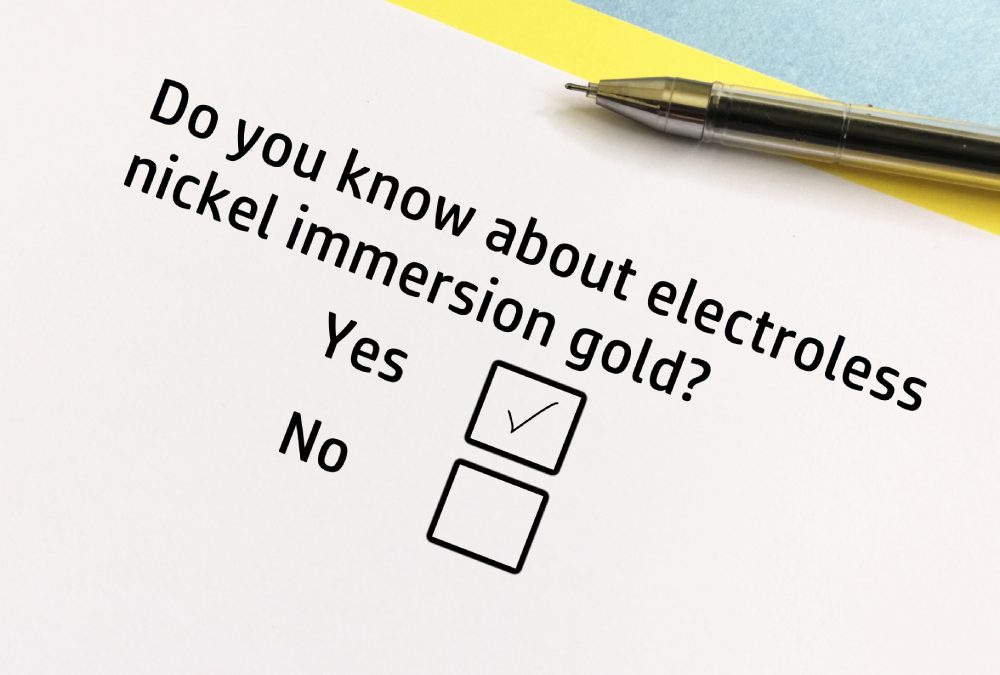The ever-evolving electronics industry relies on manufacturing standards to ensure the reliability and quality of electronic components. One such standard that has become critical in the production of printed circuit boards (PCBs) is IPC 4552. This standard specifically addresses the requirements for Electroless Nickel/Immersion Gold (ENIG) plating, a widely used surface finish for PCBs, particularly in high-performance electronics.
In this blog, we will break down what IPC 4552 entails, explain its key requirements, and discuss its significance for manufacturers. We will also highlight how Superior Processing meets these requirements and provides top-tier ENIG services to its clients.
What is IPC 4552?
IPC 4552 is a specification set by the Institute for Printed Circuits (IPC) that outlines the standards for ENIG plating used on printed circuit boards. ENIG is a two-layer finish consisting of a nickel underlayer and a gold overlayer, each serving a unique and essential function. The nickel layer works like a barrier to prevent copper from oxidation, while the gold layer protects the nickel layer and provides excellent solderability, corrosion resistance, and conductivity.
ENIG is preferred in numerous industries, including telecommunications, automotive, and consumer electronics, due to its fine surface quality, long shelf life, and compatibility with both lead-free and traditional soldering processes.
Key Requirements of IPC 4552
ENIG plating process is specified in detail in IPC 4552. The standard concentrates on the thickness of the nickel and gold layers to satisfy the performance criteria. Below are the key specifications.
Nickel Layer Thickness
The nickel layer serves as the barrier between the PCB’s copper traces and the outer gold layer. According to IPC 4552, the thickness of the nickel layer is specified to be within a minimum range of 3.0 µm (118.1 µin) to a maximum of 6.0 µm (236.2 µin) for rigid PCBs. For flexible PCBs, the nickel layer can be as thin as 1.27 µm (50 µin) but still must not exceed the maximum limit of 6.0 µm (236.2 µin).
Gold Layer Thickness
The gold layer, which is applied by immersion plating, must be within a thickness range of 0.040 µm (1.58 µin) to 0.100 µm (3.94 µin), specified for rigid and flexible PCBs. This thin gold layer is important to prevent corrosion and to provide solderability.
For manufacturers, these thickness requirements ensure that the ENIG finish provides a stable surface for soldering while delivering optimal performance in terms of electrical conductivity and corrosion resistance.
Compliance with Other Standards
ENIG finishes are required to meet other industry standards to ensure the ENIG finishes meet performance and reliability requirements, in addition to the core requirements in IPC 4552. Some of these standards include:
- ASTM B733: A specification detailing the requirements for electroless nickel plating.
- SAE AMS2404: A standard for electroless nickel coatings on metallic substrates.
- MIL-C-26074: A military specification for electroless nickel coatings used in various applications.
These additional standards further ensure that ENIG coatings meet stringent requirements for performance, durability, and compatibility with various applications.
Why IPC 4552 is Important for Manufacturers
IPC 4552 is a very important IPC standard for manufacturers in the electronics industry to meet ENIG plating process quality standards. It prevents defects like poor solderability, weak electrical connections, and susceptibility to oxidation or corrosion. Manufacturers can assure the reliability and longevity of their PCBs by following the specifications set out in IPC 4552, especially in high performance and mission critical applications.
ENIG plating offers a reliable surface finish for PCBs, especially when long-term durability is required. Electronics are continuously getting smaller and more complex; that’ensuring the quality and reliability of PCB surface finishes is paramount. IPC 4552 helps achieve that by providing a well-defined guideline for the correct thicknesses and other performance characteristics of the nickel and gold layers.
Superior Processing and IPC 4552 Compliance
At Superior Processing, we understand the importance of meeting industry standards, and we ensure that our ENIG plating services comply with IPC 4552 to deliver the highest quality PCBs. Whether you’re looking for rigid or flexible PCBs, our team uses the latest technology and strict adherence to specifications to provide precise plating thicknesses and flawless finishes.
For rigid and flexible PCBs, our ENIG service meets the thickness requirements described by IPC 4552. The nickel layer is a barrier between the oxidized copper and gold layers, providing corrosion resistance for high performance applications. Working with Superior Processing, you can be sure that your PCBs will meet the required standards for both quality and performance.
Conclusion
IPC 4552 is a necessary standard for ENIG plating, offering critical guidelines for the appropriate nickel and gold layer thicknesses to enable PCBs to perform at their optimum. Products that meet the needs of the electronics industry can be delivered reliably and durably by manufacturers who follow these guidelines.
At Superior Processing, we are dedicated to providing high-quality ENIG plated PCBs that meet these standards to our clients and deliver the best possible products for their applications.

